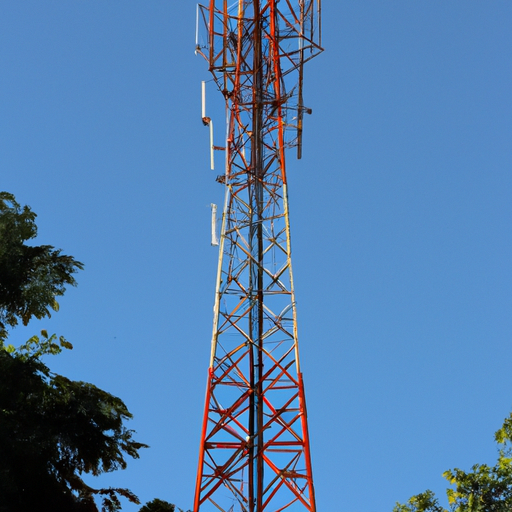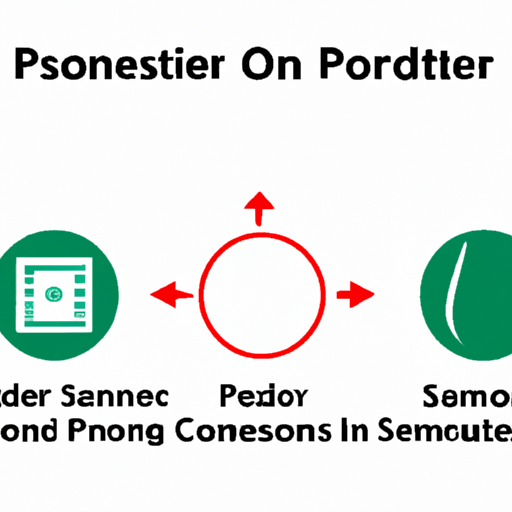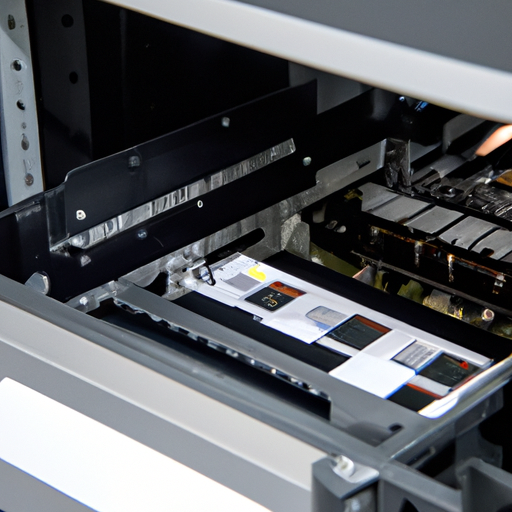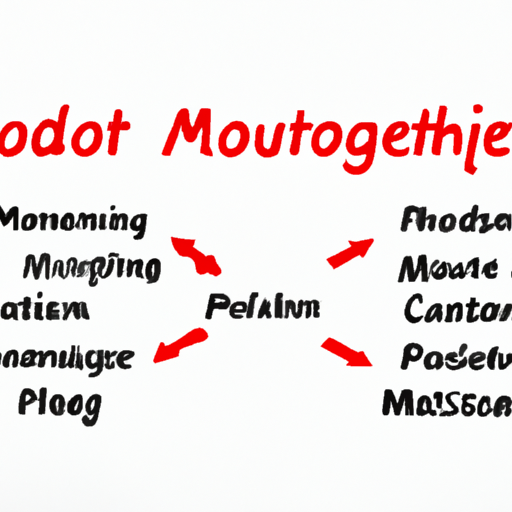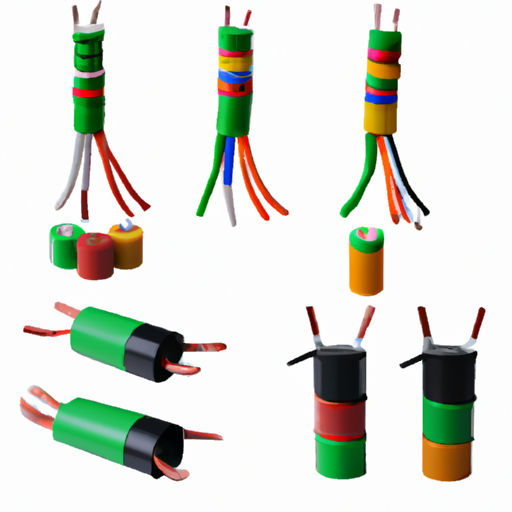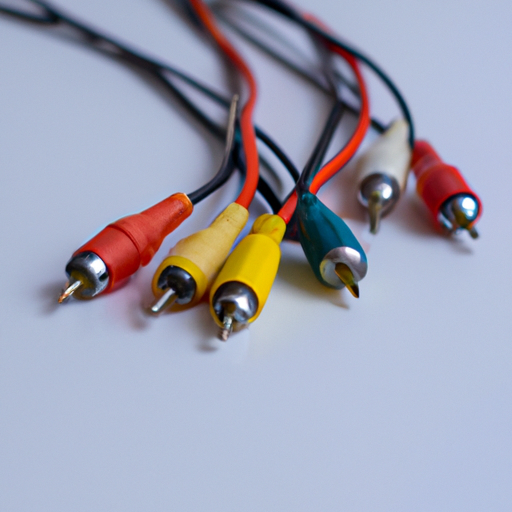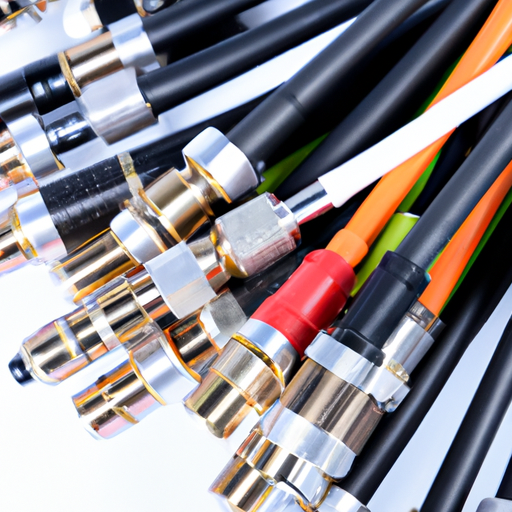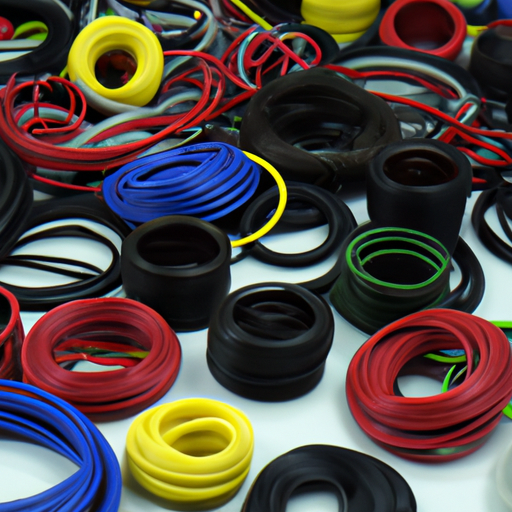Products
Products 

-
XITUO Hot Selling(289783)

-
电阻器(1216949)

-
电容器(1047813)

-
电感器,线圈,扼流圈(121274)

-
电位计,可变电阻器(30239)

-
电池产品(7289)

-
光电器件(252007)

-
电源 - 外部/内部(板外)(246633)

-
电路保护(213338)

-
音频设备, 产品(10758)

-
变压器(17477)

-
晶体,振荡器,谐振器(513002)

-
电机,电磁阀,螺线管,驱动器板/模块(17251)

-
继电器(52115)

-
开关(284364)

-
风扇,热管理(149940)

-
工具(140620)

-
焊接,拆焊,返修产品(7313)

-
分立半导体产品(222132)

-
连接器,互连器件(3628430)

-
电缆组件(378447)

-
电缆,电线(78488)

-
电缆,电线 - 管理(92693)

-
存储卡、模块(14273)

-
传感器,变送器(128911)

-
五金件、紧固件和附件(324732)

-
箱、外壳和机架(47562)

-
静电控制、ESD、洁净室产品(6854)

-
测试与计量(37623)

-
原型开发,制造品(5035)

-
套件(4505)

-
集成电路(IC)(596888)

-
开发板,套件,编程器(51394)

-
工业自动化与控制(81438)

-
线路保护,配电,备用(7771)

-
滤波器(41829)

-
RF/IF,射频/中频和 无线射频识别(107169)

-
计算机设备(7913)

-
隔离器(18981)

-
胶带,粘合剂,材料(29312)

-
光学器件(875)

-
光学检测设备(1860)

-
电源 - 板安装(255471)

-
网络解决方案(16065)

-
嵌入式计算机(4993)

-
磁性元件 - 变压器,电感器元件(6195)

-
创客/DIY,教育(1921)

-
工业用品(73392)

-
标签,标志,护栏,标识(60818)

Information
Information 

About us 

Contact us 

Products
光电器件(252007)
- 显示器模块 - LED 字符与数字(4158)
- 显示器边框,透镜(86)
- LED 发射器 - 红外,紫外,可见光(3323)
- 激光二极管,模块(1266)
- 显示器模块 - LED 点阵和群集(750)
- 镇流器,逆变器(7424)
- 配件(4909)
- 显示模块 - LCD、OLED 字符和数字(1732)
- LED - 垫片,支座(2689)
- 灯 - 白炽灯,氖灯(30647)
- 光学 - 光导管(5097)
- 显示器模块 - 真空荧光(VFD)(170)
- 灯 - 冷阴极萤光 (CCFL) 和紫外(UV)(89)
- LED 指示 - 分立(23526)
- LED - 电路板指示器,阵列,发光条,条形图(8052)
- 显示器模块 - LCD,OLED,图形(3283)
- 面板指示器,指示灯(60103)
- LED - 灯替换(22933)
- 触摸屏覆盖层(270)
- LED 照明 - COB,引擎,模块,灯条(22296)
- 光学 - 镜头(3834)
- 显示器,监视器 - LCD 驱动器/控制器(57)
- 光纤 - 发射器 - 驱动器集成电路(3999)
- 光纤 - 发射器 - 分立元件(308)
- 光纤 - 接收器(582)
- 光纤 - 收发器模块(3730)
- 光纤 - 衰减器(495)
- 光纤 -开关 ,交换机,多路复用器,解复用器(451)
- LED 散热产品(480)
- 光学 - 反射镜(560)
- 光学 - 非接触式荧光粉光源(269)
- LED 照明 - 白色(29467)
- LED 照明 - 彩色(3506)
- LED 可寻址,专用(331)
- 电致发光(72)
- 氙气灯照明(165)
- LED 照明套件(42)
- 激光二极管,激光模块 - 配件(34)
- HeNe 激光系统(19)
- HeNe 激光系统配件(8)
- 光力学(428)
- 激光二极管,激光模块 - 激光传输,激光光纤(344)
- 氦氖激光头(23)
开关(284364)
- 断连开关元件(1431)
- 配件(8916)
- 磁性、磁簧开关(1036)
- DIP 开关(6683)
- 摇臂开关(12392)
- 钥匙锁开关(2288)
- 触摸开关(5786)
- 快动,限位开关(20180)
- 按钮开关(165283)
- 旋转开关(9245)
- 拨动开关(21531)
- 小键盘开关(519)
- 选择开关(5953)
- 导航开关,操纵杆(1299)
- 可配置开关元件 - 主体(6763)
- 可配置开关元件 - 触头块,触点块(780)
- 可配置开关元件 - 照明光源(639)
- 可配置开关元件 - 透镜(837)
- 配件 - 帽盖(4666)
- 按钮开关 - 霍尔效应(88)
- 可编程显示器开关(27)
- 滑动开关(3361)
- 拨轮开关(561)
- 配件 - 护套,密封件(463)
- 拉绳开关(465)
- 紧急停止(E-Stop)开关(725)
- 互锁开关(2447)
工具(140620)
- 配件(7712)
- 压接器,压接机,压力机(18109)
- 插拔工具(4208)
- 剥线钳和配件(1023)
- 绕接线(58)
- 压接器 - 压头,模具组,成套模具(4788)
- 专用工具(5686)
- 钢丝钳(1443)
- 真空吸尘器(535)
- 螺丝和螺母起子 - 刀头、刀片和手柄(3465)
- 手电筒(347)
- 螺线包材、伸缩套管(64)
- 螺丝和螺母起子(2757)
- 镊子(1154)
- 电铲,钩,镊子,探针,调节工具(150)
- 刀,切割工具(668)
- 钳子(1413)
- 打线,刀片(149)
- 各类工具套件(933)
- 锤子(417)
- 插座 - 套件,成套(468)
- 冲压机(268)
- 螺丝和螺母起子 - 套件(1256)
- 压接器,压接机,压力机 - 配件(57634)
- 套筒,套筒手柄(4641)
- 铆固工具(74)
- 虎钳(19)
- 线缆扎带枪和配件(229)
- 热风枪,气炬,配件(1129)
- 光纤和配件(483)
- 六角,螺丝刀(913)
- 扳手(3394)
- 个人防护装备(PPE)(2319)
- 化学品,清洁剂(365)
- 点胶设备 - 尖头,喷嘴(1514)
- 磨料和表面修整产品(5231)
- 点胶设备 - 涂胶器,打胶器(123)
- 点胶设备 - 瓶子,注射器(557)
- 油漆供应(2147)
- 压力垫圈(66)
- 工具袋、盒和柜(400)
- 工作台和工作站(1468)
- 工作台和工作站 - 配件(843)
分立半导体产品(222132)
- 晶闸管 - DIAC,SIDAC(278)
- 晶体管 - 双极性晶体管(BJT)- 单个(17057)
- 晶体管 - 双极性晶体管(BJT)- 阵列(1668)
- 晶体管 - FET,MOSFET - 单个(35879)
- 晶体管 - UGBT、MOSFET - 单(4074)
- 二极管 - 整流器 - 单(45910)
- 晶闸管 - SCR(4088)
- 二极管 - 可变电容(变容器,可变电抗器)(794)
- 晶体管 - 双极(BJT)- 射频(1664)
- 二极管 - 射频(2056)
- 晶体管 - FET,MOSFET - 射频(3558)
- 二极管 - 整流器 - 阵列(13315)
- 二极管 - 齐纳 - 单(60323)
- 晶体管 - JFET(1004)
- 晶体管 - FET,MOSFET - 阵列(5011)
- 晶体管 - 可编程单结(41)
- 晶体管 - IGBT - 阵列(18)
- 晶体管 - 双极(BJT)- 单,预偏置(3582)
- 晶体管 - 双极(BJT)- 阵列 - 预偏置(1846)
- 晶体管 - 特殊用途(217)
- 二极管 - 齐纳 - 阵列(1659)
- 功率驱动器模块(1140)
- 晶体管 - IGBT - 模块(2979)
- 晶闸管 - SCR - 模块(3133)
- 二极管 - 桥式整流器(7142)
- 晶闸管 - TRIAC(3696)
连接器,互连器件(3628430)
- 电源接入连接器 - 输入,输出,模块(9321)
- 香蕉和尖头连接器 - 插孔,插头(1544)
- 卡边缘连接器 - 边缘板连接器(675671)
- 分路器,跳线(850)
- 端子 - 电线接头连接器(3099)
- 端子条和转台板(386)
- 背板连接器 - DIN 41612(5403)
- 矩形连接器 - 阵列,边缘型,夹层式(板对板)(34370)
- 端子块 - 配件(6978)
- 香蕉和尖头连接器 - 接线柱(206)
- 触头,弹簧式和压力(591)
- USB、DVI、HDMI 连接器(3152)
- 圆形连接器 - 后壳和电缆夹(42577)
- 矩形连接器 - 针座,公插针(516202)
- 矩形连接器 - 针座,插座,母插口(233898)
- 矩形连接器 - 自由悬挂,面板安装(20648)
- 矩形连接器 - 板载,直接线对板(1781)
- 矩形连接器 - 针座,专用引脚(6317)
- 矩形连接器 - 外壳(31507)
- 圆形连接器 - 外壳(384048)
- D-Sub,D 形连接器 - 外壳(10291)
- 端子块 - 适配器(829)
- 端子 - PC 引脚,单接线柱连接器(3129)
- 端子 - PC 引脚插座,插座连接器(5102)
- 端子 - 外壳,护套(1436)
- 光伏(太阳能板)连接器(490)
- 重型,重载连接器 - 组件(568)
- 端子 - 转塔连接器(1276)
- 圆形连接器 - 配件(51031)
- 圆形连接器 - 触头(4058)
- 矩形连接器 - 触头(6553)
- D-Sub,D 形连接器 - 触头(1999)
- 背板连接器 - 触头(2562)
- 触头 - 多用途(4269)
- 重型,重载连接器 - 触头(1433)
- 端子块 - 触头(26)
- D-Sub,D 形连接器 - 配件(1927)
- 矩形连接器 - 配件(5903)
- 电源接入连接器 - 配件(737)
- 同轴连接器(RF)- 配件(1377)
- 背板连接器 - 配件(2290)
- FFC,FPC(扁平柔性)连接器 - 触头(114)
- 卡边缘连接器 - 触头(143)
- 可插拔连接器 - 配件(719)
- USB,DVI,HDMI 连接器 - 配件(204)
- 套管 - 配件(53)
- 卡边缘连接器 - 配件(184)
- FFC、FPC(扁平柔性)连接器 - 配件(16)
- 香蕉和尖头连接器 - 配件(50)
- 存储器连接器 - 配件(231)
- 端子 - 磁线连接器(704)
- 卡边缘连接器 - 外壳(289)
- D-Sub,D 形连接器 - 后壳,罩(4054)
- 端子 - 专用连接器(1420)
- 刀片式电源连接器(2650)
- 重载连接器 - 配件(2500)
- 刀片式电源连接器 - 配件(318)
- 重载连接器 - 插件,模块(3099)
- 重载连接器 - 框架(445)
- 重载连接器 - 外壳,盖罩,基底(14261)
- 端子板 - 配件 - 导线扣箍(2134)
- 模块化连接器 - 磁性插孔(9427)
- 模块化连接器 - 插孔(13705)
- 模块化连接器 - 插头(1359)
- 端子板 - 隔板块(38795)
- 端子板 - DIN 导轨,通道(6635)
- 端子板 - 针座,插头和插座(81059)
- 端子板 - 线对板(33758)
- 背板连接器 - 外壳(5670)
- 系列间适配器(514)
- 同轴连接器(射频)- 适配器(3350)
- D-Sub,D 形连接器 - 适配器(833)
- 套管 - 音频适配器(82)
- USB,DVI,HDMI 连接器 - 适配器(472)
- 圆形连接器 - 适配器(8615)
- 模块化连接器 - 适配器(776)
- 矩形连接器 - 适配器(284)
- 香蕉和尖头连接器 - 适配器(72)
- 同轴连接器(RF)- 端接器(1003)
- D-Sub,D 形连接器 - 端接器(32)
- 端子块 - 配件 - 标记条(7717)
- 接线座 - 配件 - 跳线(3047)
- 背板连接器 - ARINC(3172)
- 光纤连接器 - 适配器(3491)
- 同轴连接器(射频)- 触头(371)
- 光纤连接器 - 配件(728)
- FFC、FPC(扁平柔性)连接器 - 外壳(321)
- 端子 - 铲形连接器(2963)
- 端子 - 快速连接,快速断开连接器(5192)
- 端子 - 套管,子弹式连接器(457)
- 端子 - 环形连接器(8651)
- 端子 - 矩形连接器(3992)
- 端子 - 螺纹连接器(634)
- 端子 - 电线引脚连接器(238)
- 端子 - 线对板连接器(126)
- FFC,FPC(扁平柔性)连接器(16936)
- 矩形连接器 - 板垫片,叠接器(板对板)(233625)
- 端子 - 焊片连接器(21)
- 端子 - 箔片连接器(34)
- 模块化连接器 - 插头外壳(121)
- 端子 - 刀式连接器(51)
- 端子 - 适配器(86)
- 背板连接器 - Hard Metric,标准(5619)
- 背板连接器 - 专用(34415)
- 矩形连接器 - 弹簧式(7394)
- IC、晶体管插座(21506)
- IC、晶体管插座 - 配件(170)
- IC、晶体管插座 - 适配器(232)
- 端子板 - 配电(736)
- 存储器连接器 - 直列式模块插座(2521)
- 存储器连接器 - PC 卡插槽(2721)
- 端子 - 配件(75)
- 触头 - 引线框(63)
- 模块化连接器 - 接线块 - 配件(53)
- 模块化连接器 - 接线块(93)
- 刀片式电源连接器 - 外壳(493)
- 刀片式电源连接器 - 触头(250)
- 存储器连接器 - PC 卡 - 适配器(16)
- 端子接线系统(2032)
- 光伏(太阳能板)连接器 - 触头(52)
- 光伏(太阳能板)连接器 - 配件(144)
- 端子块 - 面板安装(1277)
- Keystone - 配件(525)
- Keystone - 面板,框架(1725)
- Keystone - 插件(2574)
- 卡边缘连接器 - 适配器(70)
- 背板连接器 - ARINC 插件(2284)
- 端子块 - 接口模块(1667)
- 固态照明连接器 - 配件(208)
- 端子,接线板 - 专用(2436)
- 套管 - 音频连接器(2060)
- 套管 - 电源连接器(804)
- 圆形连接器(736331)
- 同轴连接器(射频)(22538)
- D 形连接器 - 并口(3516)
- D-Sub 连接器(140831)
- 光纤连接器(2653)
- LGH 连接器(389)
- 模块化连接器 - 配件(861)
- 插接式连接器(5030)
- 固态照明连接器(1414)
- 光纤连接器 - 外壳(910)
- 固态照明连接器 - 触头(231)
- D-Sub,D 形连接器 - 配件 - 顶丝(1673)
电缆组件(378447)
- 圆形电缆组件(49085)
- 光纤电缆(65104)
- 矩形电缆组件(83712)
- 模块化电缆(41624)
- 电源、线缆和加长线(3155)
- 跳线,预压接引线(26419)
- Firewire 电缆(IEEE 1394)(81)
- USB 电缆(2996)
- 同轴电缆(射频)(58011)
- 平软线,带状跳线(20256)
- 扁平柔性电缆(FFC、FPC)(2232)
- 系列间适配器电缆(2573)
- 可插拔电缆(5247)
- D-Sub 电缆(11607)
- 视频电缆(DVI,HDMI),视频数据线(1692)
- 套管 - 音频电缆(468)
- 套管 - 电源电缆(758)
- LGH 电缆(563)
- D 形,并口电缆(635)
- 特种电缆组件(1798)
- 智能电缆(92)
- 固态照明电缆(339)
电缆,电线 - 管理(92693)
- 焊接套管(1770)
- 配件(9591)
- 保护软管,实心管,衬套(3681)
- 光纤电缆(221)
- 电缆扎带和束线带(7376)
- 热缩管(11568)
- 标签,标记(6251)
- 冷缩带,套管(166)
- 电线管、线槽(2685)
- 线槽,走线系统 - 附件(3501)
- 电缆扎带 - 支座和固定座(1185)
- 热缩布(72)
- 电缆支撑与紧固件(5177)
- 衬套,索环(2280)
- 缆线固定扣(18557)
- 标记物(7787)
- 接地织物、接地带(400)
- 螺线包材、伸缩套管(2869)
- 配线箱,保护(440)
- 热缩包材(14)
- 电缆拉柄与支持握柄(721)
- 热缩套,帽盖(5678)
- 线槽,走线系统 - 配件 - 盖子(703)
传感器,变送器(128911)
- 编码器(3853)
- 温度传感器 - NTC 热敏电阻器(9172)
- 颗粒、灰尘传感器(32)
- 配件(6115)
- 磁体 - 多用途(1560)
- 压力传感器、变送器(9001)
- 温度传感器-热电偶、温度探头(547)
- 太阳能电池(255)
- 运动传感器 - 加速计(1369)
- 温度传感器 - 温控器- 恒温器 - 机械式(2040)
- 温度传感器 - 模拟和数字输出(2600)
- 运动传感器 - 振动(246)
- 流量传感器(339)
- 浮子,液位传感器(879)
- LVDT 变送器(线性可变差动变压器)(146)
- 运动传感器 - 倾斜开关(45)
- 接近传感器(862)
- 电流传感器(2182)
- 超声波接收器、发射器(1642)
- 冲击、振动传感器(15)
- 湿度、湿气、湿敏传感器(452)
- 气体传感器(511)
- 力传感器(59)
- 图像传感器、镜头、摄像头(1254)
- 运动传感器 - 倾角仪(82)
- 运动传感器 - 光学(590)
- 温度传感器 - RTD(电阻温度检测器)(593)
- 光学传感器 - 环境光,IR 红外线,UV 紫外线传感器(817)
- IrDA 收发器模块(184)
- 颜色传感器(72)
- 光学传感器 - 光检测器 - CdS 电池(59)
- 光学传感器 - 光电检测器 - 遥控接收器(1329)
- 光学传感器 - 测距(215)
- 光学传感器 - 光电二极管(1274)
- 光学传感器 - 光电晶体管(752)
- 光学传感器 - 光检测器 - 逻辑输出(151)
- 光学传感器 - 反射式 - 模拟输出(418)
- 光学传感器 - 光电遮断器 - 槽型 - 逻辑输出(1192)
- 光学传感器 - 光电遮断器 - 槽型 - 晶体管输出(1188)
- 位置传感器 - 角度、线性位置测量(3185)
- 温度传感器 - PTC 热敏电阻(1782)
- 多功能(187)
- 磁性传感器 - 位置,接近,速度(模块)(3760)
- 磁性传感器 - 罗盘,磁场(模块)(26)
- 磁性传感器 - 线性,罗盘(IC)(1016)
- 运动传感器 - 陀螺仪(107)
- 光学传感器 - 反射式 - 逻辑输出(145)
- 放大器(647)
- 应变计(499)
- 专用传感器(853)
- 光学传感器 - 光电,工业(7681)
- 接近/占位传感器 - 成品(517)
- 温度传感器 - 温控器 - 固态(916)
- 磁性传感器 - 开关(固态)(3020)
- 磁性器件 - 传感器匹配式(85)
- 运动传感器 - IMU(惯性测量装置、单元)(266)
- 传感器 - 配件(794)
- 传感器电缆 - 组件(3355)
- 传感器接口 - 接线盒(1822)
- 触摸传感器(65)
- 相机模块(467)
- 光学传感器 - 光电 - 计数器,检测器,SPCM(单光子计数模块)(746)
- 磁性传感器 - 位置,接近,速度(模块)- 工业(494)
- 力传感器 - 工业(112)
- 流量传感器 - 工业(80)
- 浮动,液位传感器 - 工业(159)
- 压力传感器、变送器 - 工业(25559)
- 色彩传感器 - 工业(34)
- 超声波接收器、发射器 - 工业(19)
- 温度传感器 - 温控器 - 机械 - 工业(2814)
- 温度传感器 - 模拟和数字输出 - 工业(121)
- 接近传感器 - 工业(9689)
- 编码器 - 工业(3797)
五金件、紧固件和附件(324732)
- 旋钮(5480)
- 配件(2379)
- 缓冲器,支脚,焊盘,握把(5170)
- 垫圈(2387)
- 螺丝,螺栓(14583)
- 螺母(1543)
- 安装托架(124)
- 铆钉(1691)
- 电路板支座(3162)
- 其它(6836)
- DIN 导轨通道(750)
- 孔插头 - 锥形盖(1681)
- 板垫片,支座(225980)
- 垫圈 - 套管,凸肩(1386)
- 螺钉扣眼(248)
- 元件绝缘子,安装座,垫片(668)
- 结构,运动五金件(24334)
- 泡沫(490)
- 夹子,吊架,挂钩(261)
- 粘扣带(595)
- 铰链(741)
- 轴承(8726)
- 弹簧 - 压缩,压拨(12069)
- 弹簧 - 拉伸,挂钩(2804)
- Springs - Torsion(644)
测试与计量(37623)
- 配件(19990)
- 设备 - 示波器(378)
- 设备 - 万用表(460)
- 测试点(326)
- 温度计(376)
- 设备 - 专用(3211)
- 设备 - 可调变压器(935)
- 测试夹 - 抓取器,钩(447)
- 测试引线 - 热电偶,温度探头(639)
- 测试探头尖(658)
- 测试夹 - 短头鳄鱼夹,鳄鱼夹,重型(845)
- 测试夹 - IC(154)
- 测试引线 - BNC 接口(295)
- 测试引线 - 跳线,专用型(776)
- 测试引线 - 香蕉插头,量表接口(2515)
- 测试引线 - 套件,分类(216)
- 测试引线 - 示波器探头,探针(343)
- 设备 - 函数发生器(171)
- 设备 - 射频分析仪(110)
- 设备 - 环境检测仪(1821)
- 设备 - 电源(测试,工作台)(1318)
- 设备 - 电气检测仪、电流探头(771)
- 设备 - 组合套装(109)
- 数据采集(DAQ)(574)
- GPIB 和通信(70)
- 设备-力/扭矩计(115)
套件(4505)
- 硬件套件(71)
- EMI,滤波器套件(165)
- LED 套件(43)
- 配件(32)
- 静态控制套件(50)
- 电容器套件(622)
- 电位计套件(75)
- 电阻器套件(369)
- 变压器套件(27)
- 电感器套件(407)
- 连接器套件(803)
- 其它(227)
- 集成电路(IC)套件(61)
- 各类分立套件(57)
- 连接器适配器套件(40)
- 电线和电缆扎带套件(44)
- 传感器套件(225)
- 电缆组件(19)
- 热敏电阻套件(23)
- 电缆、电线-单导线(247)
- 电路保护-分类套件(104)
- 电路保护套件-保险丝(252)
- 电路保护套件-TVS二极管(38)
- 音频套件(38)
- 水晶套件(6)
- 原型板、制造套件(68)
- 胶带套件(35)
- 光纤套件(77)
- 热缩管套件(229)
- 光学 - 光导管套件(5)
- 射频屏蔽板套件(21)
- 开关套件(25)
集成电路(IC)(596888)
- 接口 - 传感器,电容式触摸(501)
- PMIC - 激光驱动器(417)
- 接口 - 信号端接器(249)
- 线性 - 视频处理(2065)
- 嵌入式 - 微控制器(73002)
- 专用 IC(1849)
- 线性器件 - 放大器 - 仪器、运算放大器、缓冲放大器(26411)
- 时钟/计时 - 延迟线(863)
- 时钟/定时 - 可编程定时器和振荡器(23609)
- 时钟/定时 - 实时时钟(2188)
- PMIC - 监控器(40854)
- 线性 - 比较器(3891)
- PMIC - 电压基准(7489)
- 嵌入式 - 微处理器(5323)
- 嵌入式 - CPLD(复杂可编程逻辑器件)(3883)
- 嵌入式 - FPGA(现场可编程门阵列)(15949)
- 存储器 - 用于 FPGA 的配置 PROM(561)
- 嵌入式 - DSP(数字信号处理器)(2743)
- PMIC - 稳压器 - 线性(63274)
- 数据采集 - 模数转换器(ADC)(13081)
- 数据采集 - 数模转换器(DAC)(10418)
- 接口 - 电信(3116)
- 逻辑 - 专用逻辑(1378)
- 逻辑 - 缓冲器,驱动器,接收器,收发器(10548)
- 逻辑 - 栅极和逆变器(9818)
- 逻辑 - 触发器(4745)
- 逻辑 - FIFO 存储器(3553)
- 逻辑 - 锁存器(2377)
- 接口 - 编码器,解码器,转换器(444)
- 接口 - 驱动器,接收器,收发器(15302)
- 逻辑 - 多谐振荡器(480)
- 逻辑 - 移位寄存器(1556)
- PMIC - 电池管理(4679)
- 接口 - UART(通用异步接收器发送器)(1057)
- PMIC - 稳压器 - DC DC 开关式控制器(9903)
- 接口 - 编解码器(1349)
- 数据采集 - 数字电位器(5482)
- PMIC - 热插拔控制器(2165)
- 嵌入式 - PLD(可编程逻辑器件)(301)
- 逻辑 - 奇偶校验发生器和校验器(126)
- 嵌入式 - 微控制器,微处理器,FPGA 模块(936)
- 接口 - 调制解调器 - IC 和模块(262)
- 接口 - 直接数字合成(DDS)(100)
- 数据采集 - 模拟前端(AFE)(646)
- 逻辑 - 通用总线功能(603)
- PMIC - 配电开关,负载驱动器(6439)
- PMIC - V/F 和 F/V 转换器(128)
- 时钟/定时 - 时钟发生器,PLL,频率合成器(25994)
- PMIC - 显示驱动器(1214)
- PMIC - 栅极驱动器(5781)
- 逻辑 - 计数器,除法器(1836)
- 逻辑器件 - 转换器,电平移位器(2340)
- 接口 - 语音录制和回放(542)
- PMIC - 电流调节和管理(1272)
- 接口 - 滤波器 - 有源(808)
- 存储器 - 控制器(164)
- 线性器件 - 放大器 - 视频放大器和模块(1483)
- PMIC - 热管理(456)
- PMIC - 稳压器 - DC DC 开关稳压器(32990)
- PMIC - RMS 至 DC 转换器(149)
- 音频专用(1218)
- 线性 - 放大器 - 音频(3792)
- 逻辑 - 信号开关,多路复用器,解码器(5802)
- PMIC - 电机驱动器,控制器(3711)
- PMIC - LED 驱动器(6025)
- PMIC - 全、半桥驱动器(1049)
- 接口 - 模拟开关,多路复用器,多路分解器(8948)
- PMIC - AC DC 转换器,离线转换开关(3782)
- 接口 - I/O 扩展器(891)
- PMIC - 稳压器 - 特殊用途(4143)
- PMIC - 照明,镇流器控制器(427)
- 接口 - 传感器和探测器接口(1216)
- 接口 - 控制器(2769)
- 接口 - 专用(3994)
- 接口 - 串行器,解串器(1300)
- 接口 - 信号缓冲器、中继器、分离器(1206)
- PMIC - 稳压器 - 线性稳压器控制器(207)
- PMIC - OR 控制器,理想二极管(555)
- PMIC - PFC(功率因数校正)(905)
- PMIC - 电源控制器,监视器(1548)
- PMIC - 电源管理 - 专用型(5231)
- 时钟/计时 - IC 电池(4)
- 时钟/计时 - 专用(7864)
- 时钟/计时 - 时钟缓冲器,驱动器(3801)
- PMIC - 能量计量(485)
- 存储器 - 电池(3)
- 嵌入式 - 带微控制器的 FPGA(现场可编程门阵列)(39)
- 数据采集 - ADC/DAC - 专用型(2470)
- 嵌入式 - 微控制器 - 应用特定(1389)
- 逻辑 - 逻辑门和逆变器 - 多功能,可配置(1046)
- 线性 - 放大器 - 特殊用途(1354)
- 线性 - 模拟乘法器,除法器(138)
- 逻辑 - 比较器(284)
- 存储器(48416)
- 数据采集 - 触摸屏控制器(448)
- PMIC - 稳压器 - 线性稳压器 + 开关稳压器(1346)
- 嵌入式 - 片上系统(SoC)(2186)
- 接口 - 模块(96)
- PMIC - 以太网供电(PoE)控制器(716)
- 接口 - 模拟开关 - 特殊用途(2014)
- PMIC - 电池充电器(2928)
开发板,套件,编程器(51394)
- 配件(3245)
- 软件,服务(3732)
- UV 擦除器,抹除器(4)
- 评估板 - 嵌入式 - MCU,DSP(4790)
- 评估和演示板及套件(14853)
- 评估板 - 运算放大器(1039)
- 评估板 - 音频放大器(876)
- 评估板 - 线性稳压器(858)
- 评估板 - 模数转换器(ADC)(2202)
- 评估板 - DC/DC 与 AC/DC(离线)SMPS(6406)
- 评估板 - 数模转换器(DAC)(741)
- 评估板-LED驱动器(1349)
- 评估板-传感器(3060)
- 评估板-嵌入式-复杂逻辑(FPGA、CPLD)(798)
- 评估板 - 扩展板,子卡(4558)
- 可编程适配器,插座(1826)
- 编程器,仿真器和调试器(1057)
工业自动化与控制(81438)
- 配件(3535)
- 控制器 - 过程,温度(2970)
- 面板仪表 - 计数器,小时表(1423)
- 专用(649)
- 面板仪表(1687)
- 控制器 - 液体,液位(545)
- 监控器 - 电流/电压变送器(490)
- 凸轮定位器(16)
- 气动,液压 - 阀门与控制(2185)
- 保护继电器和系统(1251)
- 监控器 - 继电器输出(950)
- 控制器 - 可编程逻辑(PLC,PAC)(1116)
- 工业设备(4376)
- 控制器 - 配件(1294)
- 面板仪表 - 配件(586)
- 照明控制(100)
- 照明控制 - 配件(144)
- 控制器 - PLC 模块(3118)
- 控制器 - 机械安全(274)
- 控制器 - 电缆组件(3473)
- 机器视觉 - 配件(0)
- 机器视觉 - 照明(500)
- 机器视觉 - 控制/处理(255)
- 机器视觉 - 摄像头/传感器(493)
- 人机接口(HMI)(947)
- 人机接口(HMI)- 配件(292)
- 延时继电器(5798)
- 可堆叠塔式照明和元器件(2950)
- 机器安全 - 光幕(6845)
- 液体过滤(1304)
- 机器安全 - 激光扫描仪(188)
- 机器人技术 - 机器人(41)
- 机器人 - 末端效应器(48)
- 机器人 - 配件(217)
- 油脂和润滑剂(245)
- 电缆和软管载具,牵引链(743)
- 信号调节器和隔离器(728)
- 气动、液压-管道、软管、管道(623)
- 气动,液压 - 减震器,阻尼器,避震器(1667)
- 气动、液压-准备/处理(135)
- 气动,液压 - 接头,联轴器和分配器(11846)
- 气动,液压 - 配件(5025)
- 气动、液压-执行器/气缸(166)
- 机器安全 - 垫子(2156)
- 机器安全 - 缓冲器和边缘(5386)
- 机器视觉 - 条形码阅读器(146)
- 工业照明 - 工作照明(670)
- 工业 PC(743)
- 工业照明 - 按灯拣货(131)
- 机器安全 - 配件(968)
RF/IF,射频/中频和 无线射频识别(107169)
- 巴伦转换器 ,平衡-不平衡转换器(1253)
- RF 定向耦合器(2606)
- RF 功率分配器/分线器(1080)
- 衰减器(3993)
- RFID 应答器、标签(621)
- RFID 读取器模块(341)
- RFID 天线(208)
- RFID 评估和开发套件,板(330)
- RFID 配件(449)
- 射频评估和开发套件,开发板(7809)
- 射频放大器(18414)
- 射频混频器(2692)
- 射频检测器(362)
- RF 其它 IC 和模块(3011)
- RF 功率控制器 IC(35)
- 射频开关(9226)
- RF 配件(2817)
- 射频屏蔽(16683)
- 射频多路复用器(1321)
- RFI 和 EMI - 屏蔽和吸收材料(3871)
- 射频接收器(1636)
- 射频发射器(649)
- 射频收发器模块和调制解调器(5473)
- 射频接收器、发射器、收发器成品(2076)
- RF 天线(8547)
- 射频前端(LNA + PA)(391)
- RF 调制器(699)
- RF 解调器(228)
- 射频收发器 IC(3415)
- RFID,射频接入,监控 IC(1241)
- RFI 和 EMI - 触头,簧片和衬垫(3990)
- 射频环行器和隔离器(1702)
工业用品(73392)
- 手推车和卡车-手推车、卡车、千斤顶和推车(1939)
- 码头和仓库的梯子(248)
- 电线、电线和附件(231)
- 电气 - 发电机(35)
- 电气 - 照明配件(299)
- 维护 - 空气压缩机工具和配件(1051)
- 磁铁维护(53)
- 维护 - 垫子(2186)
- 工作站、办公家具和设备-储物柜、存储柜和配件(531)
- 工作站、办公家具和设备 - 转盘(7)
- 产品_材料搬运和储存(42)
- 产品_材料搬运和储存桶配件(25)
- 产品_材料搬运和储存_滚筒支架_升降机_卡车(2755)
- 产品_材料搬运和储存(46)
- 产品_材料搬运和储存桶_桶(55)
- 安全吸收剂_托盘和清洁剂(62)
- 安全出口标志和应急灯(198)
- 码头和仓库码头设备(360)
- 码头和仓库(113)
- 风机_码头和排气管(117)
- 风扇-鼓风机和地板干燥机(688)
- 风扇-部件-电机(33)
- 风扇-部件和附件(144)
- 家用_办公室和底座风扇(796)
- 空调(256)
- HVAC - 空气过滤器(300)
- HVAC_空气处理器(10)
- HVAC_空气净化器(82)
- 暖通空调加热器(1971)
- 清洁和维护产品(3672)
- 工作站_办公家具和设备(43)
- 工作站_办公家具和设备_椅子和凳子(797)
- 工作站_办公家具和设备_计算机工作站(275)
- HVAC_零件和附件(40)
- 办公设备_文件柜_书架(572)
- 办公设备_食品储存和准备(264)
- 办公设备和办公用品(3766)
- 办公设备_喷泉和加油站(513)
- 办公家具_隔断和配件(950)
- 办公家具_保险箱_安全存储(428)
- 办公家具和桌子(61)
- 户外产品包括自行车_衣架和锁(60)
- 户外产品_雨篷_庇护所和棚屋(12541)
- 户外产品_寒冷天气产品_服装(848)
- 户外产品和装饰(98)
- 户外用品和草坪工具(332)
- 户外用品(875)
- 户外产品包括割草机_吸尘器_鼓风机和切割机(40)
- 户外产品和户外家具(862)
- 户外产品_停车场和安全(2226)
- 除雪除冰户外产品(169)
- 户外产品包括垃圾桶_垃圾桶和盖子(199)
- 建筑/建筑产品的产品_材料搬运和储存(11368)
- 产品_材料搬运和储存托盘(25)
- 产品_材料搬运和储存架_架子_支架(5031)
- 产品_材料搬运和储存_货架_架子和配件(855)
- 产品_材料搬运和储存_储存容器和箱子(1561)
- 燃油_机油和通用罐的安全性(225)
- 运输和包装产品(4891)
- 存储容器和箱子-车库存储和组织(57)
- 车辆维护和定制产品(4875)
- 工作站、办公家具和设备-危险材料、安全柜(146)
- 码头和仓库(94)
About us
About us >>
Contact us
Contact us >>






